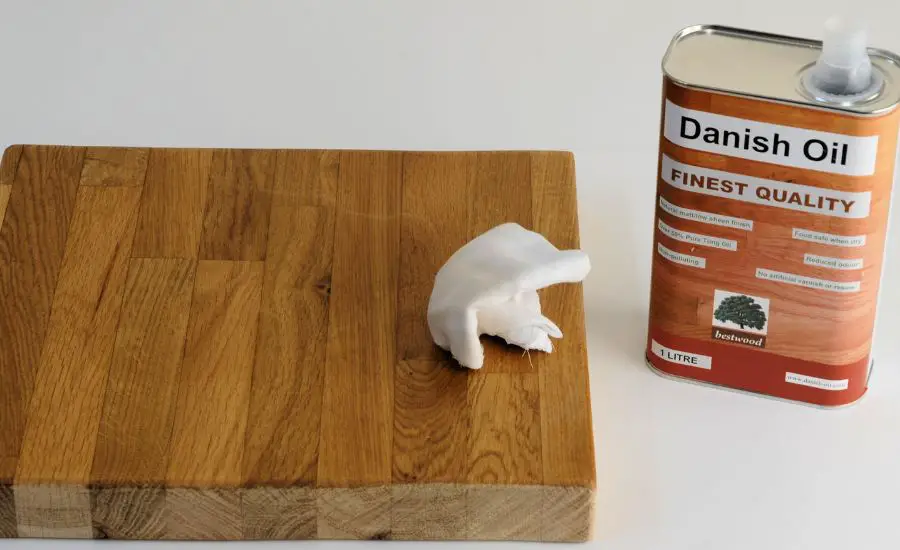Danish oil advantages and disadvantages
Table of Contents
What is Danish Oil?
Danish oil is a wood finishing oil made from a blend of oil (usually tung oil or linseed oil) and varnish. It penetrates into the wood and hardens to form a protective finish that enhances the natural grain and provides a low-sheen, hand-rubbed look.
Pros
- Brings out the natural beauty and depth of the wood.
- Leaves a warm, rich tone with a soft sheen.
- Wipe-on application – no need for spraying or brushing.
- Great for beginners and DIYers.
- Soaks into the wood for internal protection.
- Reduces cracking, warping, and drying.
- Offers moderate protection against water and spills.
- Seals the wood pores against stains.
- Safe for surfaces like kitchenware, toys, or cutting boards after curing.
- Typically dries to the touch in 4–6 hours, fully cured in a few days.
- Scratches can be repaired easily with a light recoat.
- Does not peel or flake like traditional varnish.
Cons
- Not as durable as polyurethane or lacquer.
- Can wear out under heavy foot traffic or abrasion.
- At least 3 coats are needed for optimal protection.
- Time-consuming compared to spray-on finishes.
- Finish can fade or wear down over time (especially outdoors)
- Needs re-oiling every 6–12 months depending on use.
- May blotch or darken softwoods like pine unevenly.
- Can yellow over time depending on the oil blend.
- Rags soaked in Danish oil can ignite if not disposed of properly.
- Must be laid flat to dry or soaked in water before discarding.
Best Uses for Danish Oil
- Furniture (tables, chairs, dressers)
- Interior doors and trim
- Woodturning projects
- Cutting boards (food-safe after curing)
- Gun stocks and tool handles
How to Apply Danish Oil
- Sand the wood surface (finish with 220-grit).
- Clean thoroughly with a dry cloth.
- Apply a generous coat with a rag or brush.
- Let sit for 10–15 minutes, then wipe off excess.
- Allow to dry for 6–8 hours between coats.
- Repeat 2–3 times for a protective finish.
- Let cure for 24–72 hours before use.

Danish Oil vs Other Finishes
| Feature | Danish Oil | Tung Oil | Polyurethane |
|---|---|---|---|
| Sheen | Low to satin | Matte | Gloss/Satin |
| Application | Easy (wipe-on) | Slower (multiple) | Brush/Spray |
| Durability | Moderate | Moderate | High |
| Dry Time | Fast | Slow | Medium |
| Repairs | Easy | Easy | Difficult |
Final Verdict
Danish oil is a fantastic finish if you’re looking for a natural look, easy application, and moderate protection. It’s not for high-wear surfaces like floors but works beautifully on furniture and decorative pieces.
Ideal For:
- DIY projects
- Restoring or finishing indoor wooden furniture
- Beginners wanting a forgiving finish
⚠️ Not Recommended For:
- High-traffic surfaces (floors, outdoor decking)
- Maximum water resistance needs (bathroom furniture)
READ ALSO: Is Danish oil enough for my work from home desk?

FAQs
What is Danish oil made of?
Danish oil is typically a blend of linseed oil or tung oil, varnish, and mineral spirits. Some commercial brands may include dryers and additives for faster curing and a better finish.
Is Danish oil food-safe?
Yes, after curing. Once fully cured (usually after 72 hours), Danish oil is non-toxic and safe for food-contact surfaces like cutting boards and wooden utensils. Always check the label, as formulations may vary.
How long does Danish oil take to dry?
Touch dry: 4–6 hours
Ready for recoat: 6–8 hours
Fully cured: 24–72 hours
(Depending on temperature, humidity, and wood type)
How many coats of Danish oil should I apply?
Generally, 3 coats are recommended:
1st coat for deep penetration
2nd coat for sealing and building finish
3rd coat for durability and luster
More coats can be added for a richer finish.
Can I use Danish oil over stained wood?
Yes, if the stain is oil-based and fully dry. Water-based stains may resist absorption. Always test on a small area before full application.
Does Danish oil darken wood?
Yes, it can slightly darken the wood tone, especially on softwoods or lighter species. It enriches the grain and gives a warmer hue.
Can Danish oil be used outdoors?
Yes, but with caution. Danish oil offers moderate weather resistance but is not as durable outdoors as specialized outdoor oils or spar urethane. Reapplication every few months is needed for exterior use.
Can I apply polyurethane over Danish oil?
Yes, but only after it’s fully cured (wait at least 3–5 days). Lightly sand the surface before applying polyurethane for better adhesion.
Can Danish oil be used on softwoods like pine?
Yes, but it may blotch or darken unevenly. Applying a wood conditioner beforehand helps achieve a more even finish.
How do I dispose of Danish oil rags?
Very carefully. Rags soaked in Danish oil can spontaneously combust. To dispose of them safely:
Lay flat to dry fully in a well-ventilated area
Or submerge in water in a sealed metal container
READ ALSO: Do mineral spirits evaporate?
